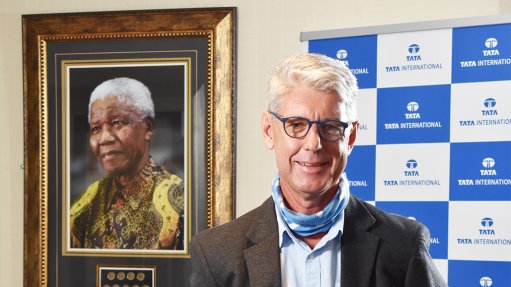
Len Brand
There is no end in sight for the current supply-chain disruptions affecting truck brands, says Tata International Africa and Tata Africa Holdings MD Len Brand.
“These disruptions that will eventually put pressure on vehicle prices, resulting in a negative impact on truck sales.”
Brand says the shortage in components owing to supply-chain constraints felt throughout the world has meant that Tata International Africa has had to work with supply shortages on some key models in its line-up for the last eight months.
“The OEMs [vehicle manufacturers] with whom we work closely have been very supportive and, although we have managed to stave off and avoid major losses in sales, the situation is still concerning.”
Brand adds that the prices of raw materials have increased substantially, noting that this will have a knock-on effect on the prices of trucks and equipment.
“In some markets we may experience a steep slowdown in commercial-vehicle sales. However, in some cases commodity-dependent markets are seeing good growth because of the higher price of raw materials.”
While the pandemic has affected all economies in the world, certain transport segments have fared better than others. This is the case for online shopping, for example, which has grown exponentially, notes Band.
Tata International Africa also witnessed the bus market being severely impacted as the demand for public transport reduced dramatically during the height of the Covid-19 pandemic. However, goods will always need to be transported.
“Our product ranges are complementary, some are cyclical, and others are anti-cyclical, and this assists us in maintaining some stability in our business,” says Brand.
“We have also diversified our service offers with rental [offerings] and body building and these have added a new revenue stream for us, enabling us to put any under-utilised capacity or working capital to good use.”
As far as sourcing or manufacturing locally rather than importing is concerned, localisation is an important aspect in bringing some value creation into countries, says Brand. However, when it comes to cost reduction or ease-of-supply, it does not make much of a difference as vehicle parts and kits still need to be imported.
Using the microchip shortage as an example, Brand says the reality is that despite the copper for the chips coming from Zambia, the raw material will still flow to China to be processed into a chip.
The chip will then travel to Germany to be built into the fuel-injection pump, following which the pump will go to Korea or India to be incorporated in the truck-building kits, which will then exported brought to Africa.
“I see the optimisation of regional supply chains in a few ways, with near sourcing and higher inventory not being the only two options,” notes Brand.
“The first method is the rationalisation and commonisation of a range.
“The idea is to keep a lower number of semi-knock-down units and standardised models across a region to help factories plan their production better.”
The second strategy is to create a central stocking hub, says Brand.
“This can be done in two ways, stocking at one of the countries or at source countries, or at a third location that makes logistical sense.”
Regardless of what strategy is adopted, some concessions need to be made and some costs are going to increase, says Brand.
“Considering that the entire industry is faced with the same challenges, our relative competitiveness will not be affected,” he adds.